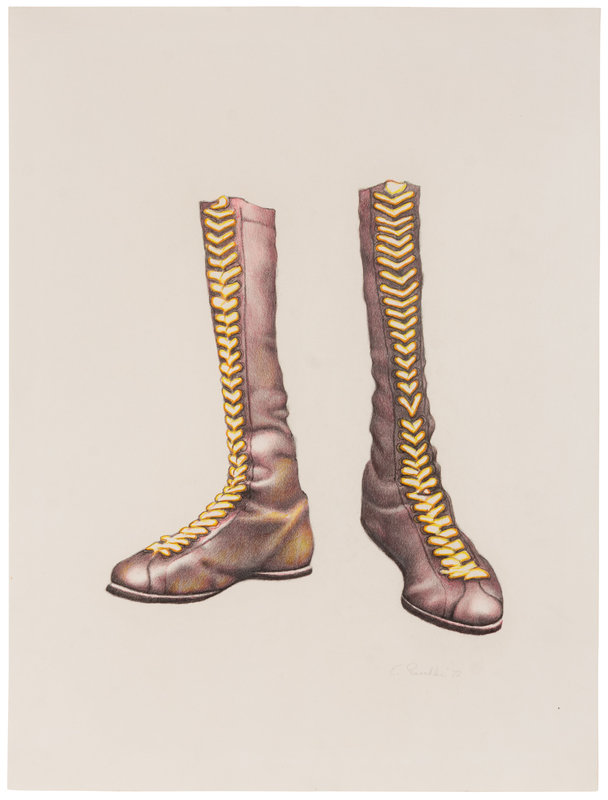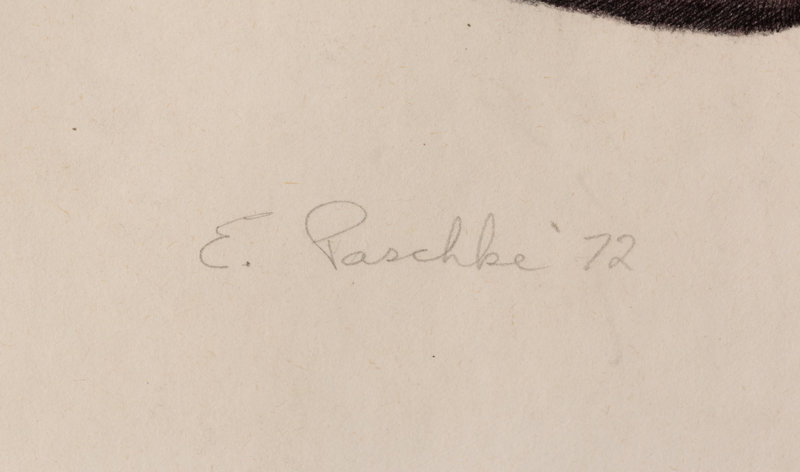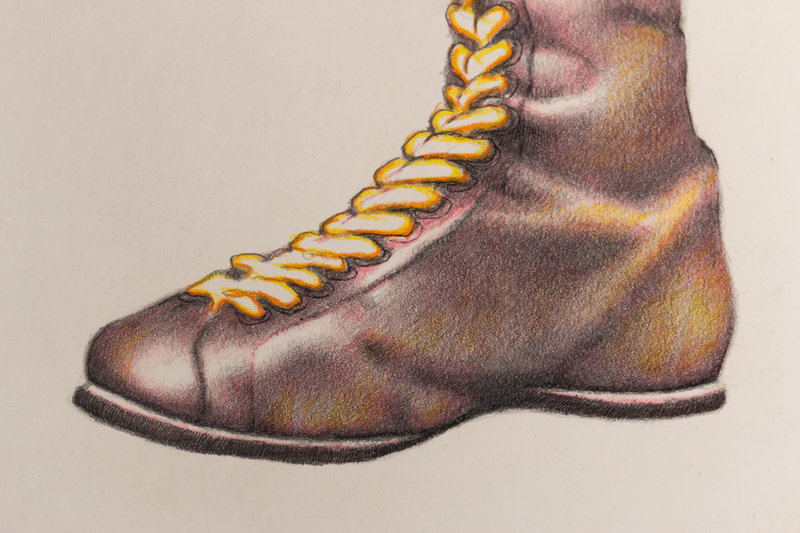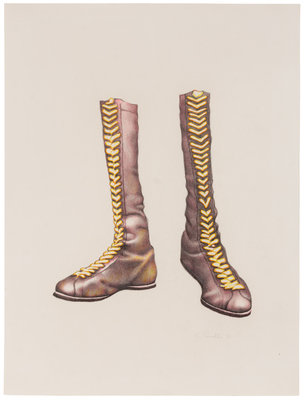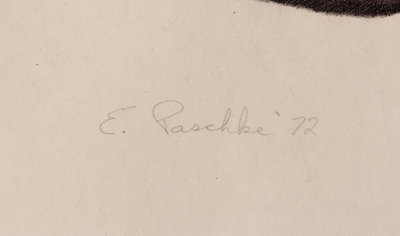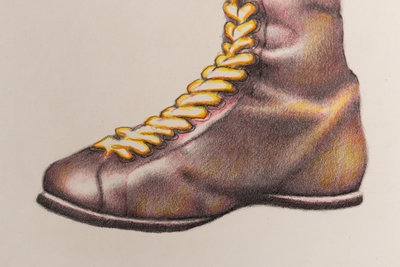Lot 1
Ed Paschke
(American, 1939-2004)
Boots
, 1972
Sale 789 - Post War and Contemporary Art
Oct 1, 2020
10:00AM CT
Live / Chicago
Own a similar item?
Estimate
$20,000 -
30,000
Price Realized
$32,500
Sold prices are inclusive of Buyer’s Premium
Lot Description
Ed Paschke
(American, 1939-2004)
Boots
, 1972colored pencil and graphite on paper
signed E. Paschke and dated (lower right)
22 x 18 inches.
Property from the Collection of Susan and Fred Novy, Northbrook, Illinois
Provenance:
Phyllis Kind Gallery, Chicago
Lot Essay:
Ed Paschke (1939-2004) was the quintessential Chicago-based artist of the Imagist generation which emerged in the disruptive period of the late 1960s. His work centered on what critic James Yood called “The human figure under duress” as he described the salient theme of Imagist art. Other prominent Imagists mined the psychological surrealism of lowbrow popular culture. Ed Paschke relied on photo imagery drawn directly from mass media.
He was interested in the adversarial relationship between individual identity and culture (which he defined as “symbols, metaphors, icons…and their baggage of referentiality”). He did not have a program, he was too inventive, the master Rule Breaker. In retrospect we see that he was working the grand theme of our age: The loss of self and hopeful redemption.
His early work centers on outsider identity, using ironic, comic exaggeration of figures and their costumes (wearable defenses), freaks and their anatomical damages. These characters were the excluded ones, while the viewer is the eager insider observer: a little smug, a little horrified, a little amused, a little sympathetic, like a visitor at a zoo or an extreme entertainment event. As Paschke’s work develops, the viewer is gradually absorbed by the surrounding, immersive, fractured context, like electric flashes, in an abusive culture. In his late work, the individual is replaced by mythic icons of public power, layered with color shards, as if torn from signs. Outsider and insider are then mingled and subsumed. The individual, the autobiographical, the essence of human identity, vanishes. Or it may seem, but Paschke was not a nihilist. He chose ambiguity, contradiction and paradox over finality.
Paschke held to a Law of Opposites, embracing the contradiction of one thing evoking its opposite alerting us to the “baggage” of ambiguous referentiality. That holds our attention and draws us close. We want to see Paschke’s art not only from the usual distance but also up close. We need to savor its surfaces and the paradox of image portraying the loss of self, and method asserting the redemption of self.
Ed Paschke was a superb craftsman. His technical mastery of drawing and painting is evident on every inch of surface. His confident touch, the featherweight delicacy of his method and the gentle assurance of his marks reveal his skill and his patient, generous, temperament. It is as though he was in private conversation with his art and its characters. He used sponges to apply and rub paint, tiny pointed brushes, pure pigments straight from the tubes and ink, crayon, and pencil that scarcely touched the surface. The canvas -and its helpless inhabitants- never felt his hand, or if they did, it was a caress, a kiss, a protective palm, a slight tap. The surface reveals Ed’s truth. There is his love and empathy, to protect and rescue each of them and each of us.
Boots, 1972, shows how visual concentration guided his pencil and crayons to an exacting, sculptural rendering that nevertheless retains a loose, almost casual, fading of edges. Thousands of bundled lines overlap, encircle and weave. They accumulate without effort. The boots are shown as in-use by an invisible wearer. Who? One thinks of bizarre militarism, maybe a crazed officer or costumed prankster. Elongated, too narrow, the boots convey oddness and tight discomfort. They are restrictive physical and psychological prosthetics. But the laces don’t bind. Instead they seem fluffy, almost like luminous chrysalises about to burst into butterflies — and freedom.
William Conger, Artist; Professor Emeritus, Art Theory and Practice, Northwestern University
Condition Report
Contact Information
Auction Specialist
